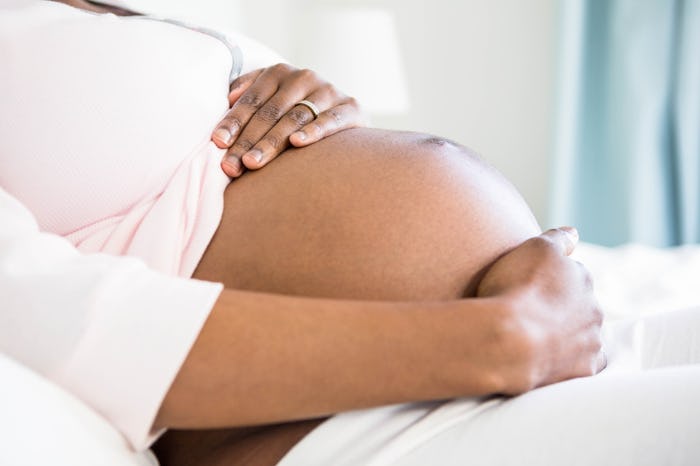Pregnant women and new mothers face a slew of health risks. While women in more modern and developed nations fare better than those in developing countries, the risks of pregnancy and childbirth aren't removed entirely. And in recent years, the maternal death rate in Texas has stood out in particular due to its alarmingly high and increasing numbers. But a new study suggests that these concerning figures may not completely accurate and maternal mortality in the southern state may not be as widespread as previously believed.
Experts have been concerned, according to BuzzFeed News, about two trends in Texas recently: increasing numbers of pregnancy-related deaths — as much as doubling between 2010 and 2012 — and a disproportionately large percentage of black mothers being affected by the rise. However, researchers in a recent study published by Birth determined that these numbers could be skewed partly due to inaccurate counting of pregnancy and birth-related deaths.
Marian MacDorman, lead researcher for the study and professor at the University of Maryland said in the published findings that without more knowledge, these deaths can't be prevented, so it's important to find true cause:
There is a real increase going on. But there’s also this data problem that really makes it very difficult. If you don’t know what happened, it’s hard to prevent the deaths. That’s my real concern.
The high maternal death rate can not be ignored and researchers acknowledge that it is increasing, but the actual size of the increase will remain unknown until an effective data collection system is put into place.
This new study follows a 2016 report by MacDorman and her colleagues on maternal mortality rates across the United States. At the time of that report, researchers found a steady decrease in maternal deaths worldwide between the years of 2000 and 2014, according to USA Today. However, for that same time period, the rate in the United States increased from 18.8 per 100,000 births in 2000 to 23.8 in 2014, according to the report. For reference, BuzzFeed provided the rates for the United Kingdom in 2014: just 3.9 per 100,000 births. Those findings are indeed cause for concern.
Those findings are indeed cause for concern and Texas, in particular, stood out by almost doubling between 2010 and 2012. MacDorman explained in the 2016 paper that Texas rates were confounding “in the absence of war, natural disaster, or severe economic upheaval.” And most recently, MacDorman has attempted to explain the discrepancy in the new peer-reviewed study and the significant differences led her to believe that there was an issue with counting the data.
As it turns out, according to this latest study, there were issues with "misreporting on death certificates," according to ProPublica, which explained:
For everyone who dies there is a death certificate, typically filled out by doctors and collected by state vital and local statistics offices. Since 2003, all states have added a checkbox to death certificates asking if the person who died was pregnant, or had been pregnant within the last year of their lives. The checkbox has made it easier to identify maternal deaths that previously had been missed — but also easier to misclassify deaths as related to pregnancy or childbirth even if they aren’t.
For instance, mortality rates for mothers in Texas over 40 were "biologically implausible," researchers said, according to ProPublica, at 36 times higher than for mothers between 25 and 29. This led researchers to believe that these women's deaths weren't related to pregnancy or childbirth, and because mothers over 40 are a small segment of the population error rates have exaggerated consequences due to the small sample size.
Reporting methods have worried researchers for years, and changes are on the horizon that could lead to more accurate numbers. Texas passed a law in June of 2017, for example, to standardize reporting of pregnancy-related deaths and a task force has since been going through death certificates to gain a better understanding of what happened to women listed as dying of pregnancy complications.
While numbers may not be as high as they seem, maternal deaths are still an issue in the United States that need to be looked into. There are a number of reasons why women die shortly after childbirth, according to NPR. Higher maternal age, large numbers of unplanned pregnancies, underlying health issues that remain untreated, lack of quality health insurance as well as discrimination in health care all lead to greater risk, especially for women of color. What's more, according to the Centers for Disease Control and Prevention, nearly 60 percent of maternal deaths are preventable, as NPR reported. Additionally, because many women and caregivers are unaware of warning signs of obstetric emergencies, many of these issues are overlooked.
The postpartum period of healing — roughly six to eight weeks after birth — is an important one. Making maternal care, as well as that of their children — in addition to finding accurate means of tracking these tragic deaths, too — a priority is an important step in lowering these numbers and helping all moms stay healthy after welcoming their baby.
